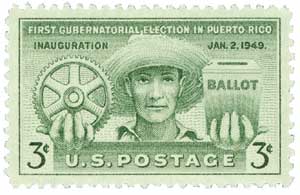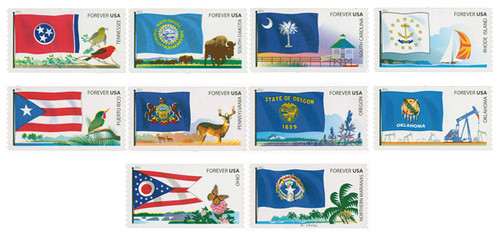
# 4318 - 2011 First-Class Forever Stamp - Flags of Our Nation: Puerto Rico
Â
City: Columbus, Ohio
Printed By: Sennett Security Products
Puerto Rico’s First Democratically-Elected Governor
Puerto Rico had been governed by Spain for more than three centuries before it was annexed to the United States in 1898. For the next fifty years, its governor was appointed by America’s president. In 1946, President Harry S. Truman appointed the island’s first full-time Puerto Rican governor – Jesús T. Piñero.
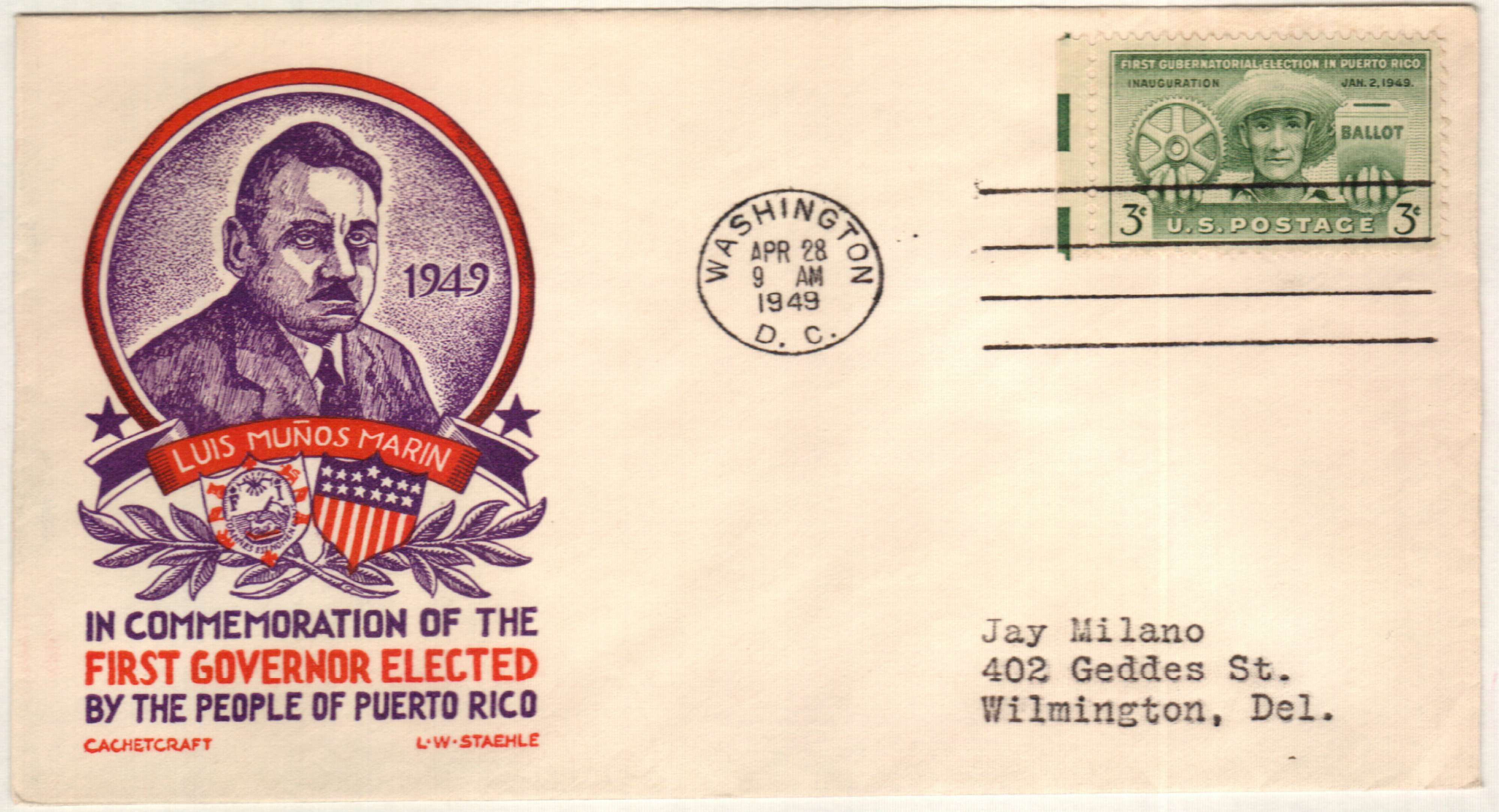
However, twice previously a Puerto Rican had temporarily served as governor. The first time was in 1579, when Juan Ponce de León II, the grandson of explorer Ponce de León, served as interim governor until the arrival of Spanish Governor Jerónimo De Aguero Campuzano. Also, in 1923, Juan Bernardo Huyke temporarily held the position in between the administrations of Americans Emmet Montgomery Reily and Horace Mann Towner.
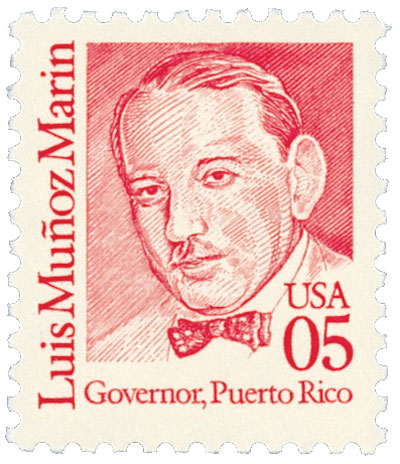
Then, in 1947, the United States Congress passed the Elective Governors Act, allowing Puerto Rico to elect its own governor. On November 2, 1947, the first elections for governor of Puerto Rico were held. Luis Muñoz MarÃn, a member of the Popular Democratic Party, emerged victorious, with 61.2% of the vote.
MarÃn first became involved in politics in the 1930s. As a member of the Puerto Rican Senate, he supported industrialization and agricultural reform. As president of the senate, MarÃn helped form Operation Bootstrap, which encouraged investment in manufacturing plants and job training for those in poverty. During his campaign for governor, MarÃn claimed, “Don’t trust politicians, even me. If you want to sell your vote, go ahead: it’s a free country. But make up your minds that you can’t have justice and the $2.00.â€
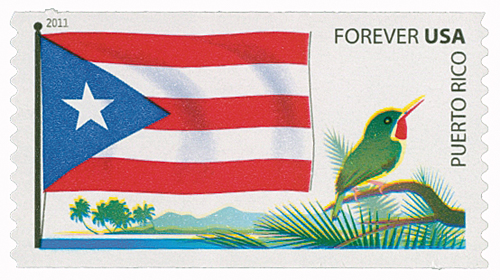
On January 2, 1949, Marin was sworn in as Puerto Rico’s first independently elected governor, a position he held until 1965. Under his leadership, Puerto Rico was given greater autonomy from the US, and also adopted a constitution. After serving five terms, supporters wanted Muñoz MarÃn to run again. He declined, saying “I am not your strength… You are your own strength.â€Â The former governor was praised by world leaders for the advances his country made under his leadership.  Time magazine called Muñoz MarÃn “one of the most influential politicians in recent times, whose works will be remembered for years to come.â€

Puerto Rico became a Commonwealth of the United States in 1952, and Congress approved the first Constitution of Puerto Rico. It listed rules on how Puerto Rico’s governors could be elected, including one that states if the margin of victory is less than half a percent, then a full recount must occur. This happened in 1980 and 2004.
Â
Â
City: Columbus, Ohio
Printed By: Sennett Security Products
Puerto Rico’s First Democratically-Elected Governor
Puerto Rico had been governed by Spain for more than three centuries before it was annexed to the United States in 1898. For the next fifty years, its governor was appointed by America’s president. In 1946, President Harry S. Truman appointed the island’s first full-time Puerto Rican governor – Jesús T. Piñero.

However, twice previously a Puerto Rican had temporarily served as governor. The first time was in 1579, when Juan Ponce de León II, the grandson of explorer Ponce de León, served as interim governor until the arrival of Spanish Governor Jerónimo De Aguero Campuzano. Also, in 1923, Juan Bernardo Huyke temporarily held the position in between the administrations of Americans Emmet Montgomery Reily and Horace Mann Towner.

Then, in 1947, the United States Congress passed the Elective Governors Act, allowing Puerto Rico to elect its own governor. On November 2, 1947, the first elections for governor of Puerto Rico were held. Luis Muñoz MarÃn, a member of the Popular Democratic Party, emerged victorious, with 61.2% of the vote.
MarÃn first became involved in politics in the 1930s. As a member of the Puerto Rican Senate, he supported industrialization and agricultural reform. As president of the senate, MarÃn helped form Operation Bootstrap, which encouraged investment in manufacturing plants and job training for those in poverty. During his campaign for governor, MarÃn claimed, “Don’t trust politicians, even me. If you want to sell your vote, go ahead: it’s a free country. But make up your minds that you can’t have justice and the $2.00.â€

On January 2, 1949, Marin was sworn in as Puerto Rico’s first independently elected governor, a position he held until 1965. Under his leadership, Puerto Rico was given greater autonomy from the US, and also adopted a constitution. After serving five terms, supporters wanted Muñoz MarÃn to run again. He declined, saying “I am not your strength… You are your own strength.â€Â The former governor was praised by world leaders for the advances his country made under his leadership.  Time magazine called Muñoz MarÃn “one of the most influential politicians in recent times, whose works will be remembered for years to come.â€

Puerto Rico became a Commonwealth of the United States in 1952, and Congress approved the first Constitution of Puerto Rico. It listed rules on how Puerto Rico’s governors could be elected, including one that states if the margin of victory is less than half a percent, then a full recount must occur. This happened in 1980 and 2004.
Â






